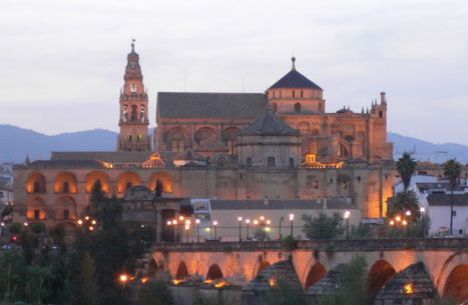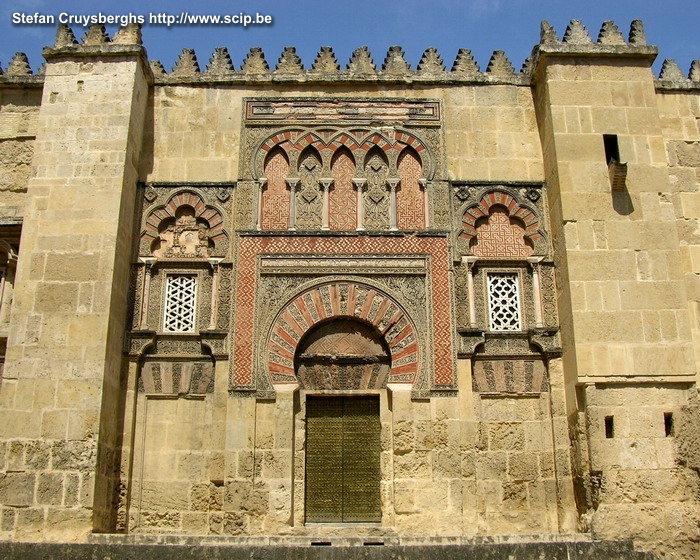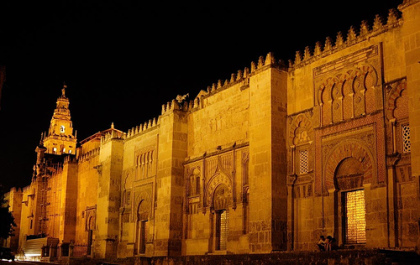
The Cathedral and former Great Mosque of Córdoba, is today a World Heritage Site and the cathedral of the Diocese of Córdoba. The site was originally a pagan temple, then a Visigothic Christian church, before the Umayyad Moors at first converted the building into a mosque and then built a new mosque on the site.
It is located in the Andalusian city of Córdoba, Spain. The Mezquita is regarded as perhaps the most accomplished monument of the Umayyad Caliphate of Córdoba. After the Spanish Reconquista, it once again became a Roman Catholic church, with a plateresque cathedral later inserted into the centre of the large Moorish building.
Since the early 2000s, Spanish Muslims have lobbied the Roman Catholic church to allow them to pray in the cathedral. The Muslim campaign has been rejected on multiple occasions, by both Spanish Catholic authorities, and the Vatican. In 2010 there was a violent incident over the matter.
The Great Mosque of Córdoba held a place of importance amongst the Islamic community of al-Andalus for three centuries. In Córdoba, the capital, the Great Mosque was seen as the heart and central focus. To the people of al-Andalus “the beauty of the mosque was so dazzling that it defied any description.”
The main hall of the mosque was used for a variety of purposes. It served as a central hall for teaching and to manage law and order within al-Andalus during the rule of Abd ar-Rahman.
The Great Mosque of Córdoba exhibited features, and an architectural appearance, similar to the Great Mosque of Damascus, therefore it is evident that it was used as a model by Abd ar-Rahman for the creation of the Great Mosque in Córdoba.
The building is most notable for its giant arches, with 856 columns of jasper, onyx, marble, and granite. These were made from pieces of the Roman temple which had occupied the site previously, as well as other destroyed Roman buildings, such as the Mérida amphitheatre. The double arches, pictured above, were a new introduction to architecture, and helped support the tremendous weight of the higher ceilings. The double arches consist of a lower horseshoe arch and an upper semi-circular arch. The famous alternating red and white voussoirs of the arches were inspired by those in the Dome of the Rock.
They resemble those of the Aachen Cathedral, which were built almost at the same time. The mosque also features richly gilded prayer niches. A centrally located honey-combed dome has blue tiles decorated with stars. The mihrab is a masterpiece of architectural art, with geometric and flowing designs of plants. Other prominent features were: an open court (sahn) surrounded by arcades, screens of wood, minarets, colourful mosaics, and windows of coloured glass.The walls of the mosque had Quranic inscriptions written on them.



























